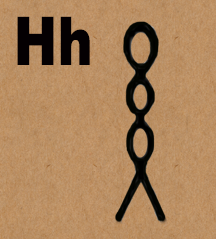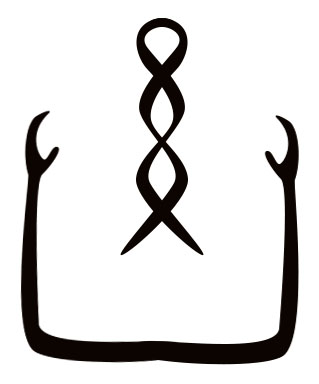It looks like you're using an Ad Blocker.
Please white-list or disable AboveTopSecret.com in your ad-blocking tool.
Thank you.
Some features of ATS will be disabled while you continue to use an ad-blocker.
share:
a reply to: saintdopeium
I apologize for my contribution in things going off topic, but also put forth that I've also posted a lot on topic too. Many of the on topic stuff also may not have happened without the off topic stuff.
I apologize for my contribution in things going off topic, but also put forth that I've also posted a lot on topic too. Many of the on topic stuff also may not have happened without the off topic stuff.
originally posted by: Puppylove
a reply to: saintdopeium
I apologize for my contribution in things going off topic, but also put forth that I've also posted a lot on topic too. Many of the on topic stuff also may not have happened without the off topic stuff.
I'm not sure anything we did or didn't do was "off topic."
The OP posted a fun story about some cultural echoes around the "Pepe Meme" ... we not only demonstrated the power such things have to inspire "sides" in an argument, but also, managed to pull in some associated themes, that, as you say, probably wouldn't have popped up.
IMO
Can we start placing bets when this meme will be banned under a Hillary administration?
a reply to: Puppylove
Accepted, but no apologies needed. You tread in a direction that I was afraid to go but you encouraged more conversation. I just wanted to encourage it a bit more.
I'm interested in the connection between the devil and frogs btw. Any more information on those connections? This whole conspiracy could take a David Icke-ian turn at some point. I was kindof expecting it as I read through the cult of Kek history.
Accepted, but no apologies needed. You tread in a direction that I was afraid to go but you encouraged more conversation. I just wanted to encourage it a bit more.
I'm interested in the connection between the devil and frogs btw. Any more information on those connections? This whole conspiracy could take a David Icke-ian turn at some point. I was kindof expecting it as I read through the cult of Kek history.
edit on 58pm09930192016pAmerica/Chicago09 by saintdopeium because: Words
Witches were often thought to keep toads and frogs as familiars in medieval Europe that sucked blood from them at skin tags and moles.
Book of Revelations, the Beast spews evil spirits in the form of frogs from its mouth: Rev. 16:13.
Arguably, I suppose, you could say that anything that anthropomorphizes an animal could be seen as creating a "graven image" (humans being created in the "image of God") and thus be against the Torah/Ten Commandments.
Book of Revelations, the Beast spews evil spirits in the form of frogs from its mouth: Rev. 16:13.
Arguably, I suppose, you could say that anything that anthropomorphizes an animal could be seen as creating a "graven image" (humans being created in the "image of God") and thus be against the Torah/Ten Commandments.
originally posted by: Gryphon66
a reply to: SargonThrall
The third glyph on the statuette pictured above is for "h" or "Hh" right? A candle wick?
Perhaps easily confused (or not) with Heka, the deification of "magic force" or to "use or burn the Ka":
Not to add to the conspiratorialness going on around this but Hh (Yes, I understand it is only H but represents upper and lower cases) is kind of white supremacyish, right? 88=HH=Heil Hitler...
You knew that of course...
a reply to: Gryphon66
You're reaching here. It is the first symbol, not third. Do not forget Egyptian is read in different directions.

And it is not a candle wick. It is twisted flax, which was noted in the post which you quoted. It is not HH, just H, it appears that your source just decided to write both written cases. The symbol H was not mistaken for heka, which is literally just an H on top of a K(a). They were implying they thought it looked like a physical depiction of magic. It was just the author not understanding something mundane. Note that they also thought a hillside was a computer, and a woman was a man. And while we're at it, that Heket was Kuk.
a reply to: saintdopeium
Indeed, it is interesting, but it seems more of a case of misinformation being proffered and then enthusiasm overtaking any rational sensibility. Once the rumor spreads it gains speed. There are a lot of holes in their theory, but they believe anyway. But that's religion for you.
To the best of my knowledge frogs never had anything to do with the devil, but certainly with witches. You will notice:
Heket is far more of a frog god than Kuk. I believe Kuk was only a frog because the primordial gods, living in chaos (represented by water) had to be water creatures. Hence frogs and snakes. Many people are unaware that snakes can swim:
You're reaching here. It is the first symbol, not third. Do not forget Egyptian is read in different directions.

And it is not a candle wick. It is twisted flax, which was noted in the post which you quoted. It is not HH, just H, it appears that your source just decided to write both written cases. The symbol H was not mistaken for heka, which is literally just an H on top of a K(a). They were implying they thought it looked like a physical depiction of magic. It was just the author not understanding something mundane. Note that they also thought a hillside was a computer, and a woman was a man. And while we're at it, that Heket was Kuk.
a reply to: saintdopeium
Indeed, it is interesting, but it seems more of a case of misinformation being proffered and then enthusiasm overtaking any rational sensibility. Once the rumor spreads it gains speed. There are a lot of holes in their theory, but they believe anyway. But that's religion for you.
To the best of my knowledge frogs never had anything to do with the devil, but certainly with witches. You will notice:
In Egypt the frog was most commonly associated with the goddess Heket (or Heqet), the goddess of fertility and childbirth who assisted Isis in her ritual to resurrect Osiris. Heket is depicted as a frog-shaped goddess, whose priestesses trained as midwives. They wore amulets, jewellery and other ornaments that bore her image. Frog shaped knives placed on to the bellies of pregnant women and newborn babies were believed to protect their youngsters. Frogs in general were so important to the early Egyptians they were often embalmed after death.
Heket is far more of a frog god than Kuk. I believe Kuk was only a frog because the primordial gods, living in chaos (represented by water) had to be water creatures. Hence frogs and snakes. Many people are unaware that snakes can swim:
a reply to: SargonThrall
Here's a much better example. Them are some serious swimmers.
But, since snakes are reptiles, they are evil.
Here's a much better example. Them are some serious swimmers.
But, since snakes are reptiles, they are evil.
edit on 9/20/2016 by Phage because: (no reason given)
edit on 9/20/2016 by Phage because: (no reason given)
a reply to: SargonThrall
Yep. Thanks for reminding me about reading order.
However, the H(h) glyph ... are you sure it's "twisted flax" rather than a candle wick?
I'd be the first to admit that I'm no Egyptologist ... but ... sources.
WIck (h hieroglyph) Wikipedia
also here: Transliteration of Ancient Egyptian Signs

I certainly agree that the initial representation of the person at the computer screen was bollocks, and moreso that the three glyphs on the questionable frog statuette are merely the name Heket.
Yep. Thanks for reminding me about reading order.
However, the H(h) glyph ... are you sure it's "twisted flax" rather than a candle wick?
I'd be the first to admit that I'm no Egyptologist ... but ... sources.
WIck (h hieroglyph) Wikipedia
also here: Transliteration of Ancient Egyptian Signs

I certainly agree that the initial representation of the person at the computer screen was bollocks, and moreso that the three glyphs on the questionable frog statuette are merely the name Heket.
edit on 20-9-2016 by Gryphon66 because: Noted
a reply to: saintdopeium
Fort myers Trump rally had text 88022 and a black guy with a black shirt that said sw00sh
Fort myers Trump rally had text 88022 and a black guy with a black shirt that said sw00sh
originally posted by: SargonThrall
a reply to: Gryphon66
It turns out we are both correct! It is twisted flax, commonly used as a candle wick:
I should stick to Mesopotamia.
Nope, you were right, I was just repeating what I saw. I meant to make the post about "twisting flax wick" before I retired last evening, but, alas ...
Now, with that out of the way, LOL.
Were we able to establish if that frog statuette was ancient or a modern imitation?
a reply to: Puppylove
I hear Pepe might be a tulpa introduced into the human consciousness, some other entities initiating it, setting it in motion. Some entity or group of entities are stoking the fire. We are probably dealing with some nationalistic sect of Japanese Kappas that are bent on political domination in the human sphere.. they're rooting for some kind of racial holy war.
Other memes may also be thought of within this same framework. Thoughts permeating the environment and the collective consciousness. So it could happen naturally but this process could also be tapped into and be controlled and directed or redirected in various fashions, this is the invisible war of human culture. The invisible influences that the modern World does not acknowledge or take into account. A similar example would be a negative entity introducing itself to a select group of people and feeding on a situation like the Slender Man and possibly Freddie Krueger.
Interesting this is. The time is pregnant.. soon all the conditions needed for our most powerful magick will be met.
I hear Pepe might be a tulpa introduced into the human consciousness, some other entities initiating it, setting it in motion. Some entity or group of entities are stoking the fire. We are probably dealing with some nationalistic sect of Japanese Kappas that are bent on political domination in the human sphere.. they're rooting for some kind of racial holy war.
Other memes may also be thought of within this same framework. Thoughts permeating the environment and the collective consciousness. So it could happen naturally but this process could also be tapped into and be controlled and directed or redirected in various fashions, this is the invisible war of human culture. The invisible influences that the modern World does not acknowledge or take into account. A similar example would be a negative entity introducing itself to a select group of people and feeding on a situation like the Slender Man and possibly Freddie Krueger.
Interesting this is. The time is pregnant.. soon all the conditions needed for our most powerful magick will be met.
Dunno 'bout all the egyptian stuff... But with modern politics reacting to a takeover conspiracy by a bunch of trolling frogs, I think of these two
characters...

Of course the audience that gets this joke is probably limited. I suspect many in the meme circles will get it though.

Of course the audience that gets this joke is probably limited. I suspect many in the meme circles will get it though.
new topics
-
Matthew Livelsberger said he was being followed by FBI
The Gray Area: 15 minutes ago -
How the Sikhs Deal with Muslim Grooming Gangs – Tommy Robinson
Social Issues and Civil Unrest: 1 hours ago -
Paranoid Liberals Believe U.S. Service Members are More Dangerous than Illegal Aliens.
Social Issues and Civil Unrest: 2 hours ago -
The 119th Congress has Officially Opened for Business
Mainstream News: 3 hours ago -
Here we again... CHINA having mass outbreak of something
Diseases and Pandemics: 3 hours ago -
Flee from idolatry
Religion, Faith, And Theology: 9 hours ago -
FIEND SLASHED: Sara Sharif’s killer dad ‘has neck & face sliced open with jagged tuna tin lid
Mainstream News: 9 hours ago -
Musk calls on King Charles III to dissolve Parliament over Oldham sex grooming gangs
Mainstream News: 10 hours ago -
Grenfell Tower Fire revisited
Mainstream News: 11 hours ago -
The Why Files Lacerta Reveals the Truth of our Creation
Aliens and UFOs: 11 hours ago
top topics
-
Musk calls on King Charles III to dissolve Parliament over Oldham sex grooming gangs
Mainstream News: 10 hours ago, 14 flags -
The Why Files Lacerta Reveals the Truth of our Creation
Aliens and UFOs: 11 hours ago, 11 flags -
Grenfell Tower Fire revisited
Mainstream News: 11 hours ago, 9 flags -
FIEND SLASHED: Sara Sharif’s killer dad ‘has neck & face sliced open with jagged tuna tin lid
Mainstream News: 9 hours ago, 9 flags -
The 119th Congress has Officially Opened for Business
Mainstream News: 3 hours ago, 6 flags -
Here we again... CHINA having mass outbreak of something
Diseases and Pandemics: 3 hours ago, 6 flags -
Paranoid Liberals Believe U.S. Service Members are More Dangerous than Illegal Aliens.
Social Issues and Civil Unrest: 2 hours ago, 5 flags -
Flee from idolatry
Religion, Faith, And Theology: 9 hours ago, 3 flags -
How the Sikhs Deal with Muslim Grooming Gangs – Tommy Robinson
Social Issues and Civil Unrest: 1 hours ago, 3 flags -
Matthew Livelsberger said he was being followed by FBI
The Gray Area: 15 minutes ago, 0 flags
active topics
-
Tesla Cybertruck Explodes in Front of Trump Hotel in Las Vegas
Mainstream News • 177 • : CarlLaFong -
Elon Musk Calls for Tommy Robinson to be Freed - and Takes a Dig at Starmer
Politicians & People • 16 • : gortex -
Matthew Livelsberger said he was being followed by FBI
The Gray Area • 0 • : billxam1 -
Musk calls on King Charles III to dissolve Parliament over Oldham sex grooming gangs
Mainstream News • 85 • : DontTreadOnMe -
Here we again... CHINA having mass outbreak of something
Diseases and Pandemics • 10 • : network dude -
Ukraine halts transit of Russian gas to Europe after a prewar deal expired
Political Conspiracies • 141 • : Oldcarpy2 -
The Why Files Lacerta Reveals the Truth of our Creation
Aliens and UFOs • 7 • : ARM19688 -
The 119th Congress has Officially Opened for Business
Mainstream News • 16 • : xuenchen -
Grenfell Tower Fire revisited
Mainstream News • 7 • : BeyondKnowledge3 -
How the Sikhs Deal with Muslim Grooming Gangs – Tommy Robinson
Social Issues and Civil Unrest • 3 • : Freeborn




